1. Wild S, Roglic G, Green A, Sicree R, King H. Global prevalence of diabetes: estimates for the year 2000 and projections for 2030. Diabetes Care. 2004; 27:1047–1053. PMID:
15111519.

2. UK Prospective Diabetes Study (UKPDS) Group. Intensive blood-glucose control with sulphonylureas or insulin compared with conventional treatment and risk of complications in patients with type 2 diabetes (UKPDS 33). Lancet. 1998; 352:837–853. PMID:
9742976.
3. Umpierrez GE, Isaacs SD, Bazargan N, You X, Thaler LM, Kitabchi AE. Hyperglycemia: an independent marker of in-hospital mortality in patients with undiagnosed diabetes. J Clin Endocrinol Metab. 2002; 87:978–982. PMID:
11889147.

4. Foo K, Cooper J, Deaner A, Knight C, Suliman A, Ranjadayalan K, Timmis AD. A single serum glucose measurement predicts adverse outcomes across the whole range of acute coronary syndromes. Heart. 2003; 89:512–516. PMID:
12695455.

5. ADVANCE Collaborative Group. Patel A, MacMahon S, Chalmers J, Neal B, Billot L, Woodward M, Marre M, Cooper M, Glasziou P, Grobbee D, Hamet P, Harrap S, Heller S, Liu L, Mancia G, Mogensen CE, Pan C, Poulter N, Rodgers A, Williams B, Bompoint S, de Galan BE, Joshi R, Travert F. Intensive blood glucose control and vascular outcomes in patients with type 2 diabetes. N Engl J Med. 2008; 358:2560–2572. PMID:
18539916.
6. Duckworth W, Abraira C, Moritz T, Reda D, Emanuele N, Reaven PD, Zieve FJ, Marks J, Davis SN, Hayward R, Warren SR, Goldman S, McCarren M, Vitek ME, Henderson WG, Huang GD. VADT Investigators. Glucose control and vascular complications in veterans with type 2 diabetes. N Engl J Med. 2009; 360:129–139. PMID:
19092145.

7. Action to Control Cardiovascular Risk in Diabetes Study Group. Gerstein HC, Miller ME, Byington RP, Goff DC Jr, Bigger JT, Buse JB, Cushman WC, Genuth S, Ismail-Beigi F, Grimm RH Jr, Probstfield JL, Simons-Morton DG, Friedewald WT. Effects of intensive glucose lowering in type 2 diabetes. N Engl J Med. 2008; 358:2545–2559. PMID:
18539917.
8. de Galan BE, Zoungas S, Chalmers J, Anderson C, Dufouil C, Pillai A, Cooper M, Grobbee DE, Hackett M, Hamet P, Heller SR, Lisheng L, MacMahon S, Mancia G, Neal B, Pan CY, Patel A, Poulter N, Travert F, Woodward M. ADVANCE Collaborative group. Cognitive function and risks of cardiovascular disease and hypoglycaemia in patients with type 2 diabetes: the Action in Diabetes and Vascular Disease. Preterax and Diamicron Modified Release Controlled Evaluation (ADVANCE) trial. Diabetologia. 2009; 52:2328–2336. PMID:
19688336.

9. Krinsley JS, Grover A. Severe hypoglycemia in critically ill patients: risk factors and outcomes. Crit Care Med. 2007; 35:2262–2267. PMID:
17717490.

10. Rasooly RS, Akolkar B, Spain LM, Guill MH, Del Vecchio CT, Carroll LE. The National Institute of Diabetes and Digestive and Kidney Diseases Central Repositories: a valuable resource for nephrology research. Clin J Am Soc Nephrol. 2015; 10:710–715. PMID:
25376765.

11. Lee BW, Kim JH, Ko SH, Hur KY, Kim NH, Rhee SY, Kim HJ, Moon MK, Park SO, Choi KM. Committee of Clinical Practice Guideline of Korean Diabetes Association. Insulin therapy for adult patients with type 2 diabetes mellitus: a position statement of the Korean Diabetes Association, 2017. Korean J Intern Med. 2017; 32:967–973. PMID:
29057642.

12. Matthews DR, Hosker JP, Rudenski AS, Naylor BA, Treacher DF, Turner RC. Homeostasis model assessment: insulin resistance and beta-cell function from fasting plasma glucose and insulin concentrations in man. Diabetologia. 1985; 28:412–419. PMID:
3899825.
13. Hanefeld M, Duetting E, Bramlage P. Cardiac implications of hypoglycaemia in patients with diabetes: a systematic review. Cardiovasc Diabetol. 2013; 12:135. PMID:
24053606.
14. Johnston SS, Conner C, Aagren M, Smith DM, Bouchard J, Brett J. Evidence linking hypoglycemic events to an increased risk of acute cardiovascular events in patients with type 2 diabetes. Diabetes Care. 2011; 34:1164–1170. PMID:
21421802.

15. Timmons JG, Cunningham SG, Sainsbury CA, Jones GC. Inpatient glycemic variability and long-term mortality in hospitalized patients with type 2 diabetes. J Diabetes Complications. 2017; 31:479–482. PMID:
27343028.

16. Yki-Jarvinen H, Dressler A, Ziemen M. HOE 901/300s Study Group. Less nocturnal hypoglycemia and better post-dinner glucose control with bedtime insulin glargine compared with bedtime NPH insulin during insulin combination therapy in type 2 diabetes. Diabetes Care. 2000; 23:1130–1136. PMID:
10937510.
17. Riddle MC, Rosenstock J, Gerich J. Insulin Glargine 4002 Study Investigators. The treat-to-target trial: randomized addition of glargine or human NPH insulin to oral therapy of type 2 diabetic patients. Diabetes Care. 2003; 26:3080–3086. PMID:
14578243.

18. Singhai A, Banzal S, Joseph D, Jha RK, Jain P. Comparison of insulin glargine with human premix insulin in patients with type 2 diabetes inadequately controlled on oral hypoglycemic drugs in a 24-week randomized study among Indian population. Indian J Clin Pract. 2013; 2:619–623.

19. Hermansen K, Colombo M, Storgaard H, OStergaard A, Kolendorf K, Madsbad S. Improved postprandial glycemic control with biphasic insulin aspart relative to biphasic insulin lispro and biphasic human insulin in patients with type 2 diabetes. Diabetes Care. 2002; 25:883–888. PMID:
11978685.

20. Malone JK, Yang H, Woodworth JR, Huang J, Campaigne BN, Halle JP, Yale JF, Grossman LD. Humalog Mix25 offers better mealtime glycemic control in patients with type 1 or type 2 diabetes. Diabetes Metab. 2000; 26:481–487. PMID:
11173719.
21. Coscelli C, Iacobellis G, Calderini C, Carleo R, Gobbo M, Di Mario U, Leonetti F, Galluzzo A, Pirrone V, Lunetta M, Casale P, Paleari F, Falcelli C, Valle D, Camporeale A, Merante D. Importance of premeal injection time in insulin therapy: humalog Mix25 is convenient for improved post-prandial glycemic control in type 2 diabetic patients with Italian dietary habits. Acta Diabetol. 2003; 40:187–192. PMID:
14740279.

22. Malone JK, Bai S, Campaigne BN, Reviriego J, Augendre-Ferrante B. Twice-daily pre-mixed insulin rather than basal insulin therapy alone results in better overall glycaemic control in patients with type 2 diabetes. Diabet Med. 2005; 22:374–381. PMID:
15787659.

23. Mattoo V, Milicevic Z, Malone JK, Schwarzenhofer M, Ekangaki A, Levitt LK, Liong LH, Rais N, Tounsi H. Ramadan Study Group. A comparison of insulin lispro Mix25 and human insulin 30/70 in the treatment of type 2 diabetes during Ramadan. Diabetes Res Clin Pract. 2003; 59:137–143. PMID:
12560163.

24. Wu T, Betty B, Downie M, Khanolkar M, Kilov G, Orr-Walker B, Senator G, Fulcher G. Practical guidance on the use of premix insulin analogs in initiating, intensifying, or switching insulin regimens in type 2 diabetes. Diabetes Ther. 2015; 6:273–287. PMID:
26104878.

25. Tambascia MA, Nery M, Gross JL, Ermetice MN, de Oliveira CP. Evidence-based clinical use of insulin premixtures. Diabetol Metab Syndr. 2013; 5:50. PMID:
24011173.

26. Kalra S, Gupta Y, Unnikrishnan AG. Flexibility in insulin prescription. Indian J Endocrinol Metab. 2016; 20:408–411. PMID:
27186563.

27. Ligthelm RJ, Kaiser M, Vora J, Yale JF. Insulin use in elderly adults: risk of hypoglycemia and strategies for care. J Am Geriatr Soc. 2012; 60:1564–1570. PMID:
22881394.

28. Lachin JM, McGee P, Palmer JP. DCCT/EDIC Research Group. Impact of C-peptide preservation on metabolic and clinical outcomes in the Diabetes Control and Complications Trial. Diabetes. 2014; 63:739–748. PMID:
24089509.

29. Kuhtreiber WM, Washer SL, Hsu E, Zhao M, Reinhold P 3rd, Burger D, Zheng H, Faustman DL. Low levels of C-peptide have clinical significance for established type 1 diabetes. Diabet Med. 2015; 32:1346–1353. PMID:
26172028.

30. Li ZG, Qiang X, Sima AA, Grunberger G. C-peptide attenuates protein tyrosine phosphatase activity and enhances glycogen synthesis in L6 myoblasts. Biochem Biophys Res Commun. 2001; 280:615–619. PMID:
11162564.

31. Grunberger G, Sima AA. The C-peptide signaling. Exp Diabesity Res. 2004; 5:25–36. PMID:
15198369.

32. Alsahli M, Gerich JE. Hypoglycemia in patients with diabetes and renal disease. J Clin Med. 2015; 4:948–964. PMID:
26239457.

33. Nirantharakumar K, Marshall T, Kennedy A, Narendran P, Hemming K, Coleman JJ. Hypoglycaemia is associated with increased length of stay and mortality in people with diabetes who are hospitalized. Diabet Med. 2012; 29:e445–e448. PMID:
22937877.

34. McKechnie J, Maitland R, Sainsbury CAR, Jones GC. Admission glucose number (AGN): a point of admission score associated with inpatient glucose variability, hypoglycemia, and mortality. J Diabetes Sci Technol. 2019; 13:213–220. PMID:
30247069.

35. Bonds DE, Miller ME, Bergenstal RM, Buse JB, Byington RP, Cutler JA, Dudl RJ, Ismail-Beigi F, Kimel AR, Hoogwerf B, Horowitz KR, Savage PJ, Seaquist ER, Simmons DL, Sivitz WI, Speril-Hillen JM, Sweeney ME. The association between symptomatic, severe hypoglycaemia and mortality in type 2 diabetes: retrospective epidemiological analysis of the ACCORD study. BMJ. 2010; 340:b4909. PMID:
20061358.

36. Edelman SV, Polonsky WH. Type 2 diabetes in the real world: the elusive nature of glycemic control. Diabetes Care. 2017; 40:1425–1432. PMID:
28801473.

37. Kim HS, Lee S, Kim JH. Real-world evidence versus randomized controlled trial: clinical research based on electronic medical records. J Korean Med Sci. 2018; 33:e213. PMID:
30127705.

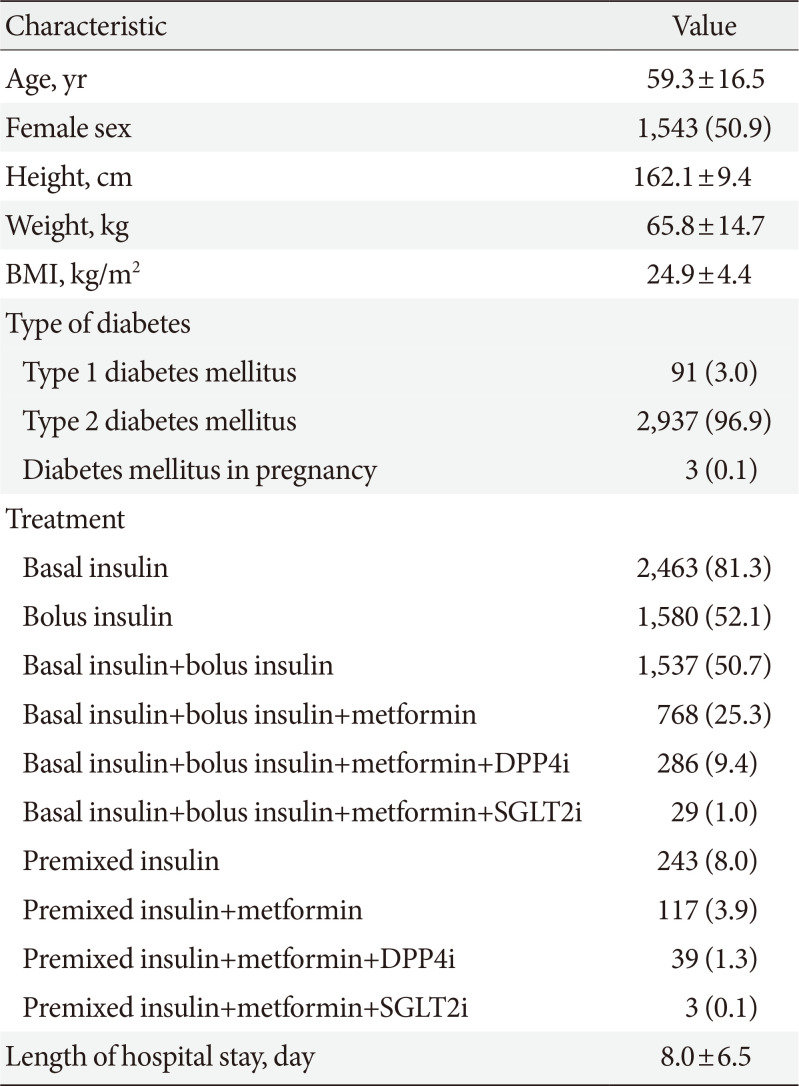
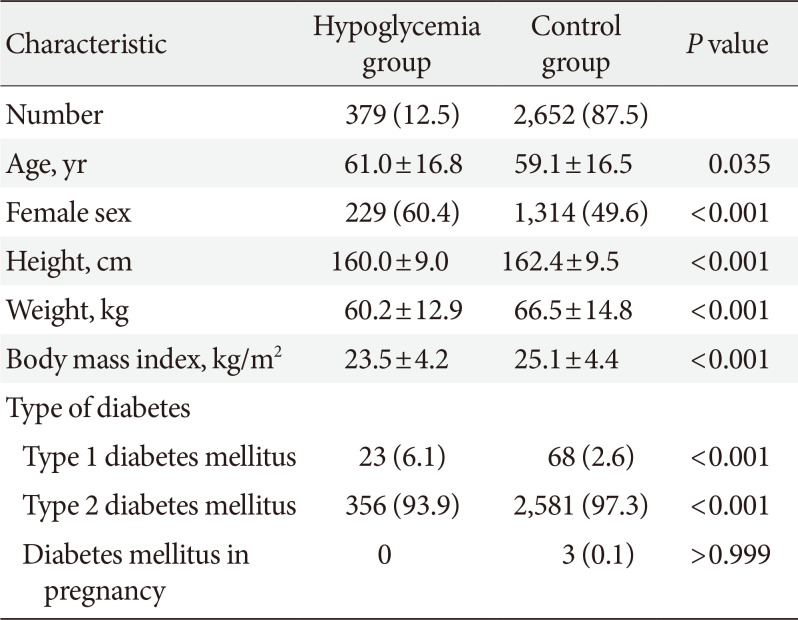
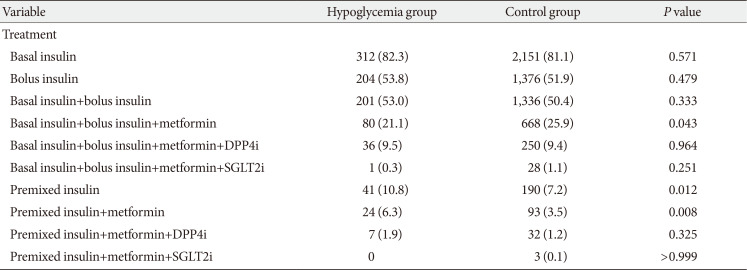





 PDF
PDF Citation
Citation Print
Print



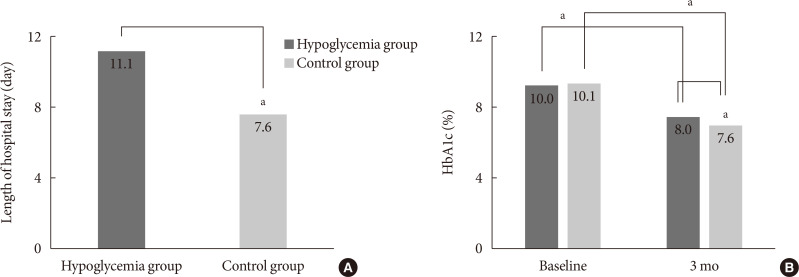
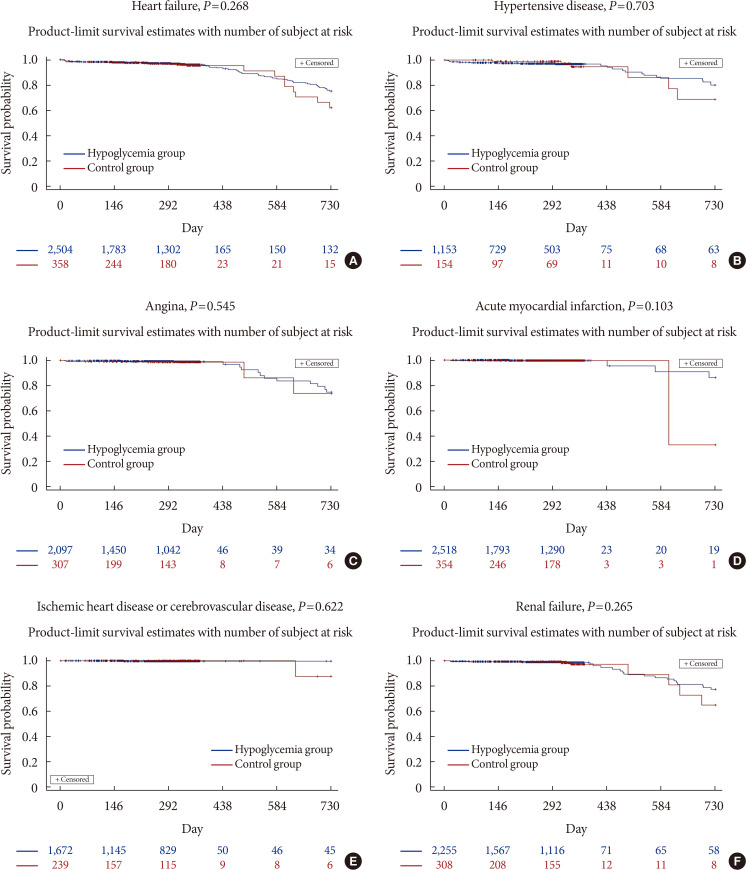
 XML Download
XML Download